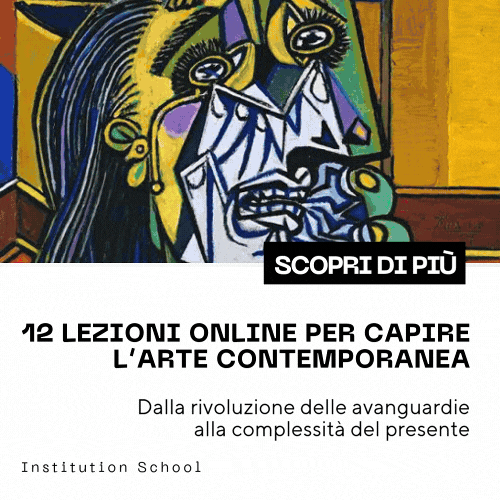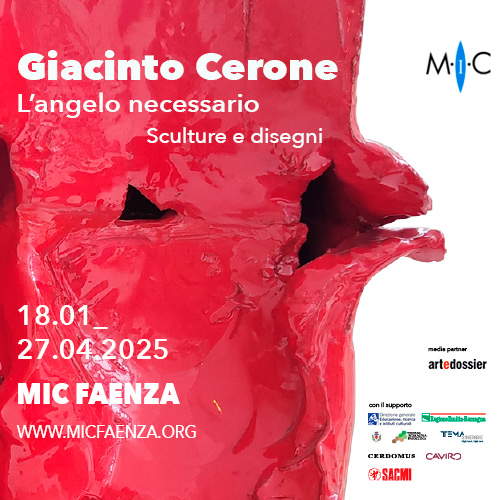L'Aquila, important cycle of 16th century frescoes discovered during a restoration
Last weekend, during the European Heritage Days 2023, an important discovery was unveiled inL’Aquila: in the church of Santa Maria della Misericordia, located in the Quarto di Santa Maria, one of the quarters ofAbruzzo’s capital city, near the church of San Silvestro, a remarkable cycle of 16th-century frescoes was in fact discovered. The cycle was unearthed during restoration work on the church (to be precise, in the second batch of work) that began in the fall of 2021, and it emerged under the late Baroque decorative apparatus.
The restorations served to repair the damage suffered by the altars of the nave: when the damaged parts of the 18th-century structure were removed, a series of frescoes that had been considered lost were immediately discovered, which appeared instead, according to experts from the Abruzzo Regional Secretariat of the Ministry of Culture, clearly legible and very well preserved. Further checks then made it possible to recover two other works on the counterfacade, covered by the wooden doors leading to the chancel. On the right wall one can now admire a Lamentation over the Dead Christ and a Penitent St. Jerome; in correspondence, in the niches of the opposite wall, here instead are Jesus and the Samaritan Woman at the Well and a fine Mystical Marriage of St. Catherine. On the counterfaçade, however, are anAllegory of the Immaculate Conception and a St. Augustine (under restoration) and an intense St. Anthony of Padua with scenes from his life. At the Saint’s feet a date: MCCCCCXXXVIII (1538). These are the elements that make up the pictorial cycle, which, thanks to historical sources, is attributed to Francesco da Mont ereale (Montereale, 1466 or 1475 - L’Aquila, 1541) and his workshop (the painter’s work also includes the Nativity of the Virgin, an altarpiece from the Misericordia itself and preserved in the National Museum of Abruzzo).
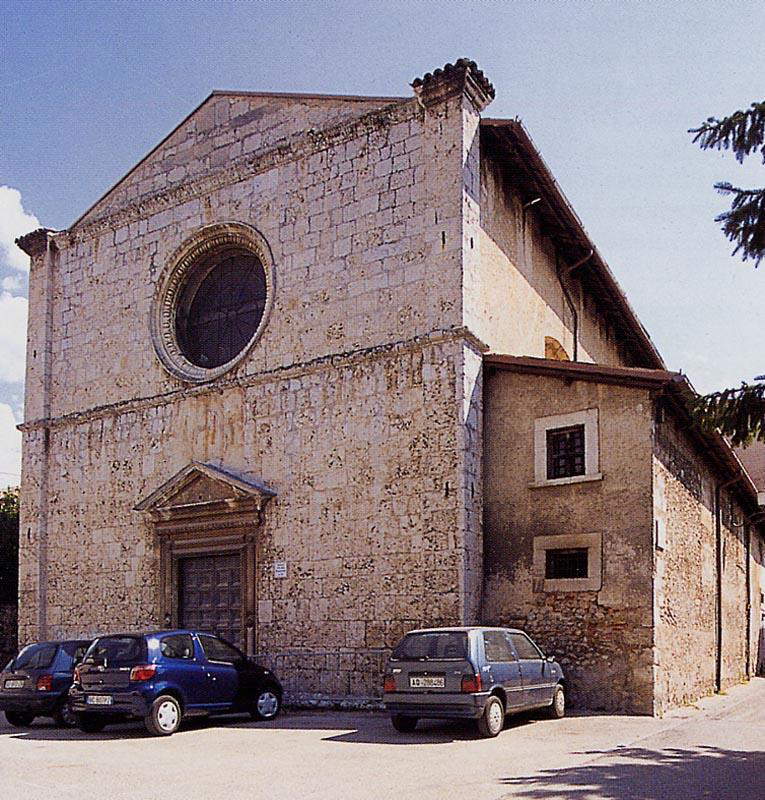
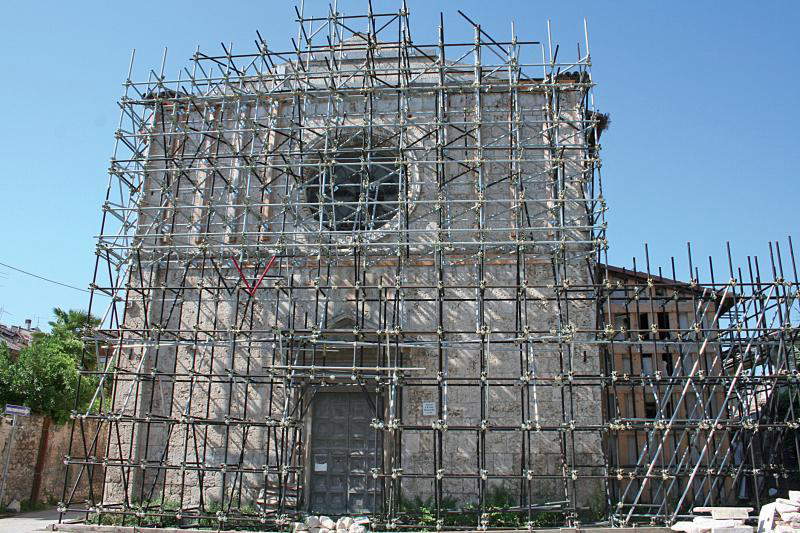 The
The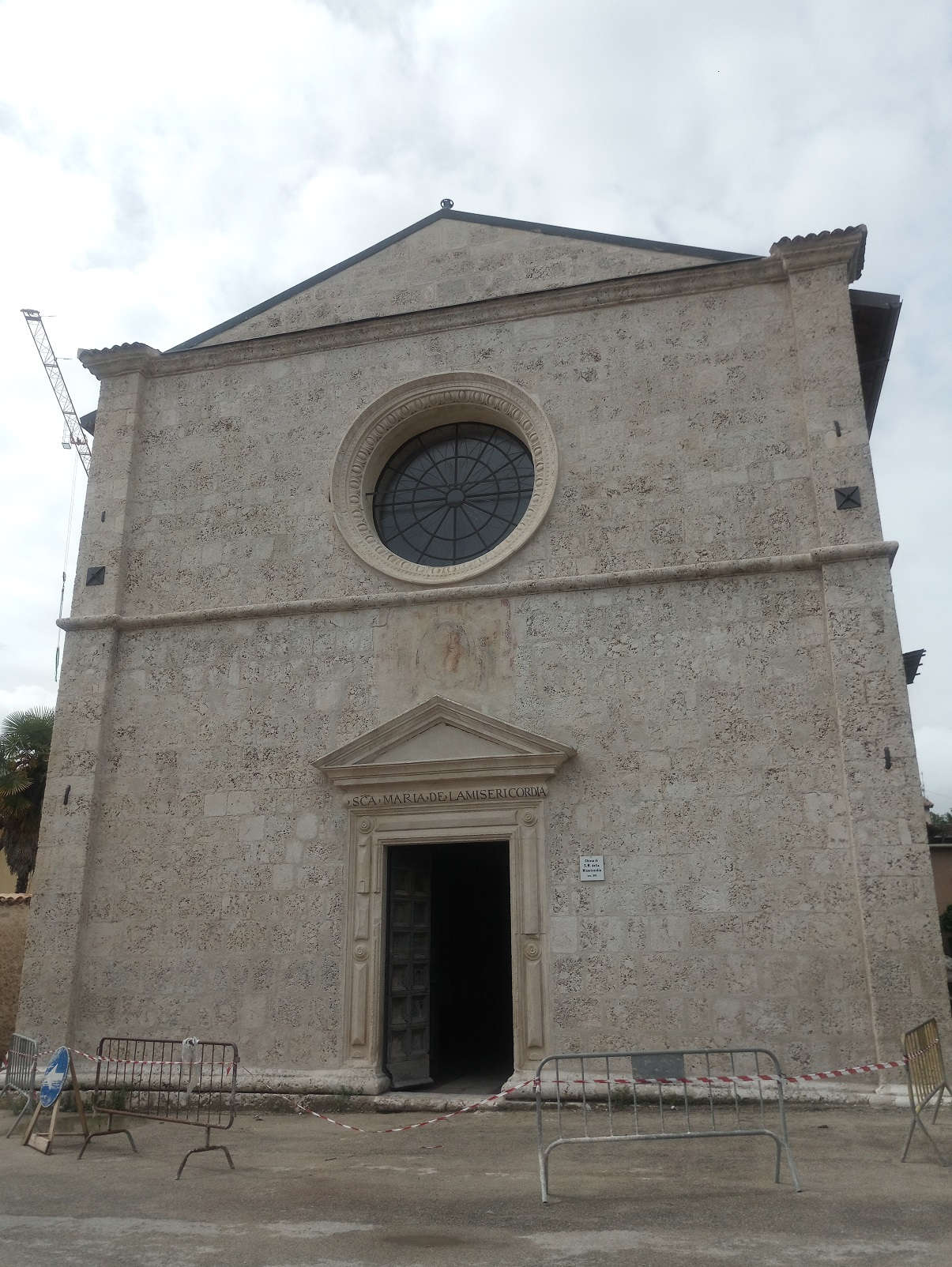
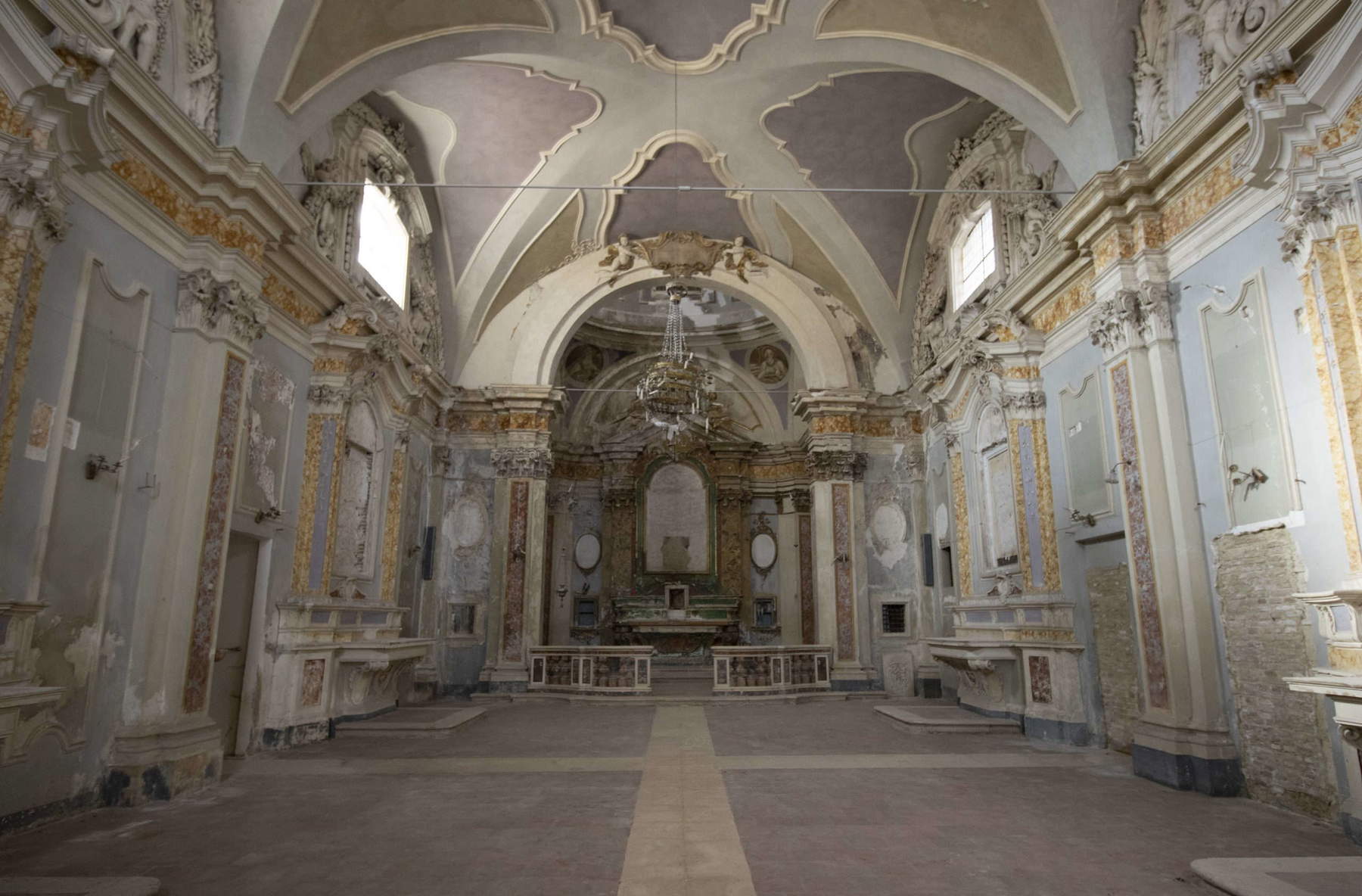
The reading of the frescoes can begin with the scene with St. Augustine and theImmaculate Conception, set in open countryside overlooking the sea (complete with a port city in the background). Augustine shows the book with the inscription “CONCEP/TA EST/ SINE M/ACVLA” referring obviously to Our Lady, and on the right the Virgin kneeling in prayer. Above must have been the figure of the Eternal Father with angels, which was destroyed to make way for the chancel staircase. The presence of this particular iconography recalls a theme challenged by the Reformation initiated by Luther with the 95 Theses of Wittenberg in 1517. The iconographic theme of the sinless birth of the Virgin Mary (in which Emperor Charles V also showed great interest in order to arrive at a solution to the political conflicts between the Catholics of the Empire and the German princes) is here accompanied by the figure of St.Augustine who was to be the example to follow in that, besides being the first theologian to speak of Mary’s perfect and special nature, he made himself the vehicle of precise doctrinal contents that were meant to refute the heterodox theses prevalent in his time. St. Augustine, in fact, repeatedly and clearly reiterated the concepts of Mary’s physical and at the same time divine motherhood as well as her virginity, which make her the symbol of the Church, in the spirit a virgin, by integrity and piety, and a mother in charity.
On the other hand, inside the niche on the right as you exit the main door is the St. Anthony of Padua with four miraculous episodes from his life (the miracle of the reattached foot, the miracle of the speaking infant, the miracle of the moneylender’s heart, and the miracle of the starving mule: the stories refer to the most famous miracles attributed to the saint and offer glimpses of daily life in addition to a sampling of sins such as jealousy, avarice, and heresy). The figure of the saint is framed by two classical columns above which stands the inscription “ORA PRO NOBIS BEATE ANTONI” (“Blessed Anthony, pray for us”). On the pedestal at the base the date 1538 is prominently displayed. The presence of the fresco with St. Anthony of Padua, pendant of St. Augustine with the Immaculate Conception, is to be related to the role of the saint, an asserter of the dogma of the Assumption of the Virgin, as a preacher against the Cathar heresies in Italy and Albigensian heresies in France, so much so that he took the nickname “Hammer of the Heretics.”
Next we observe the scene depicting Jesus’ encounter with the Samaritan woman at the well of Sicar, narrated in the Gospel of John. The sacred scene depicted in the foreground with Christ, the young woman, and the well in the center turns out to be almost a pretext for telling the story of life outside the walls of a large city. Behind the protagonists is a wide view between a rich plain with a group of high mountain peaks in the background. The well vera in the foreground is the centerpiece of the composition and is characterized by a detailed description of the decorative elements, taken from the ancient classical repertoire, where floral festoons are interspersed with ram’s heads.
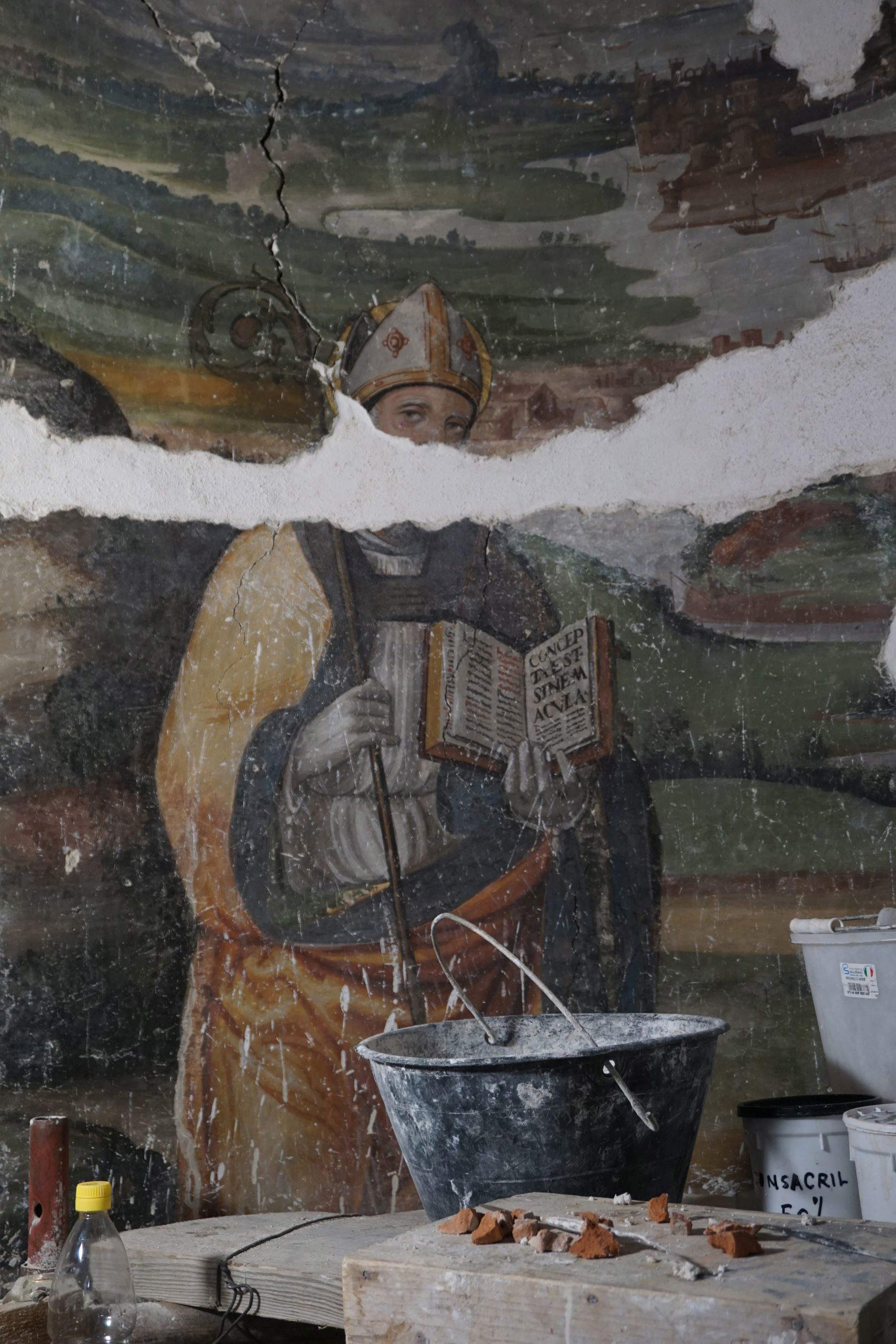
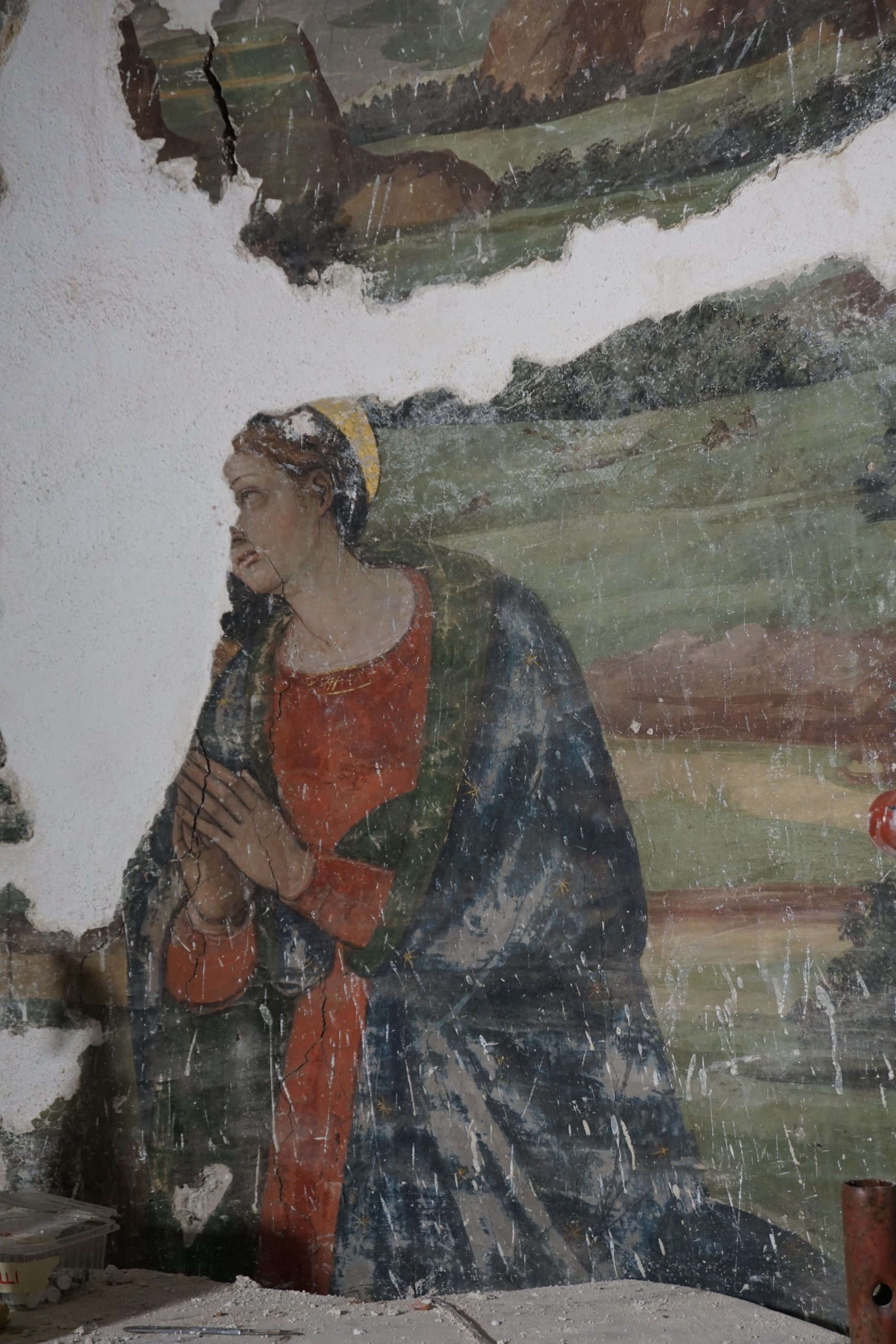
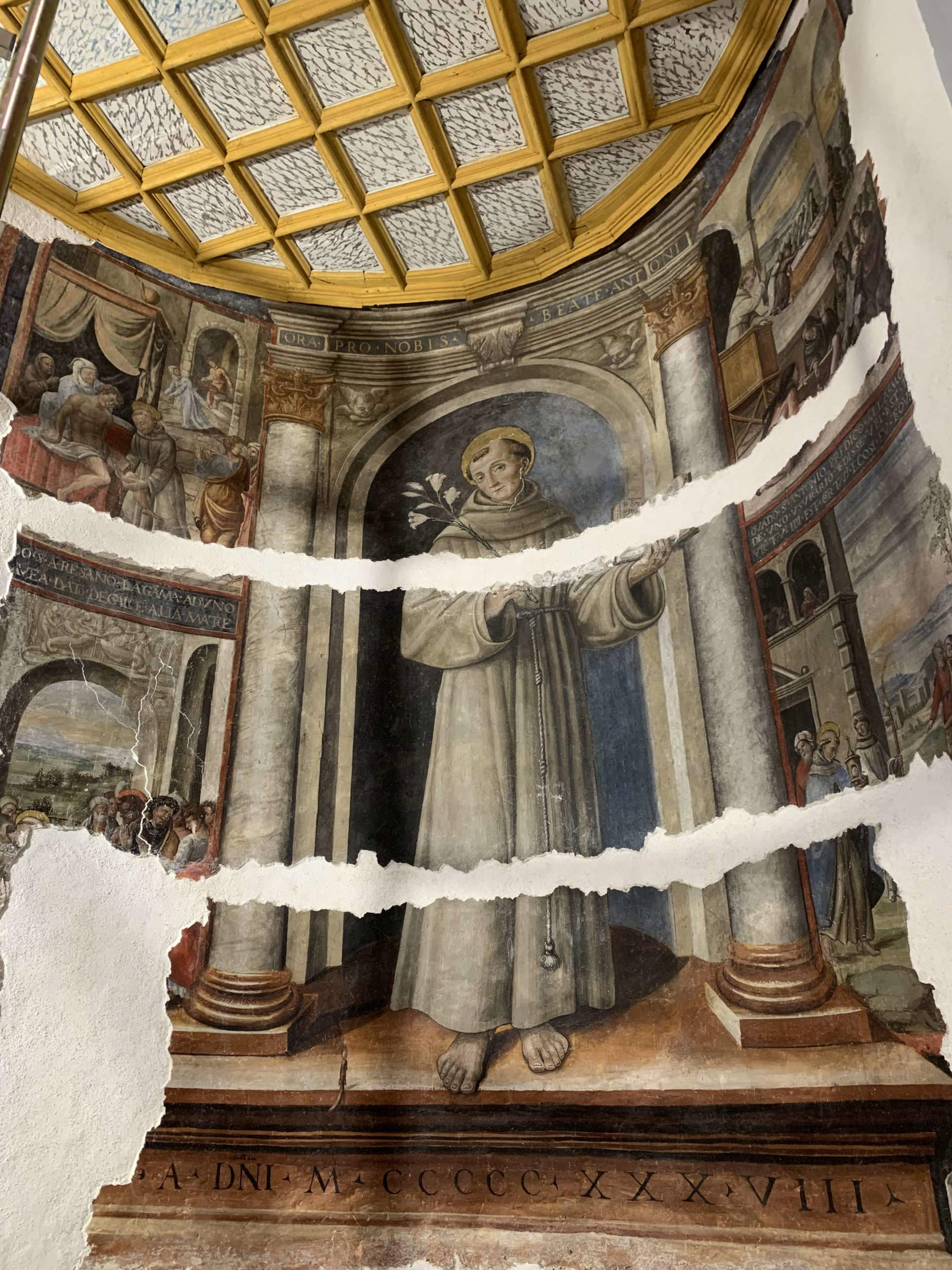
 St.
St.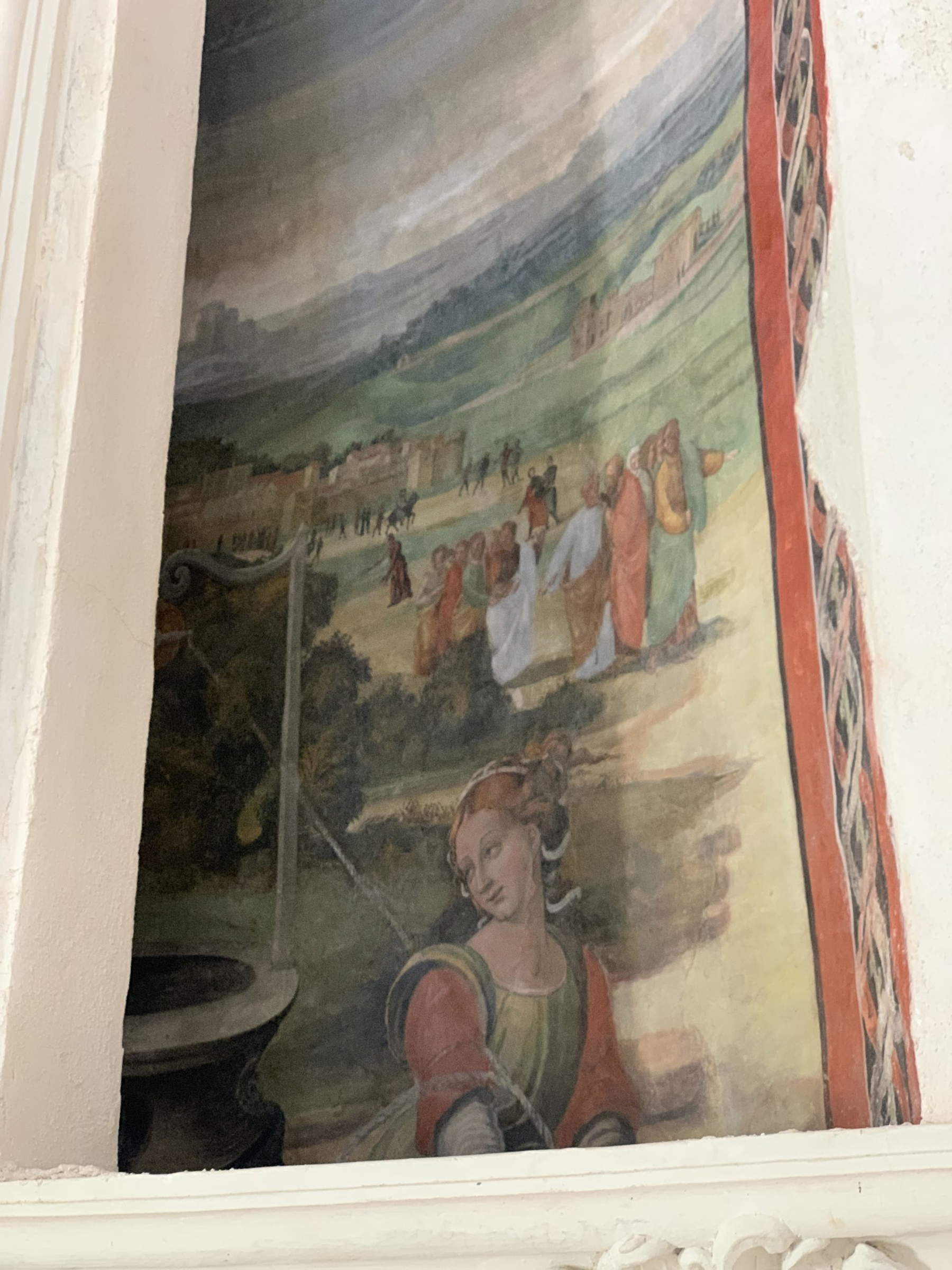
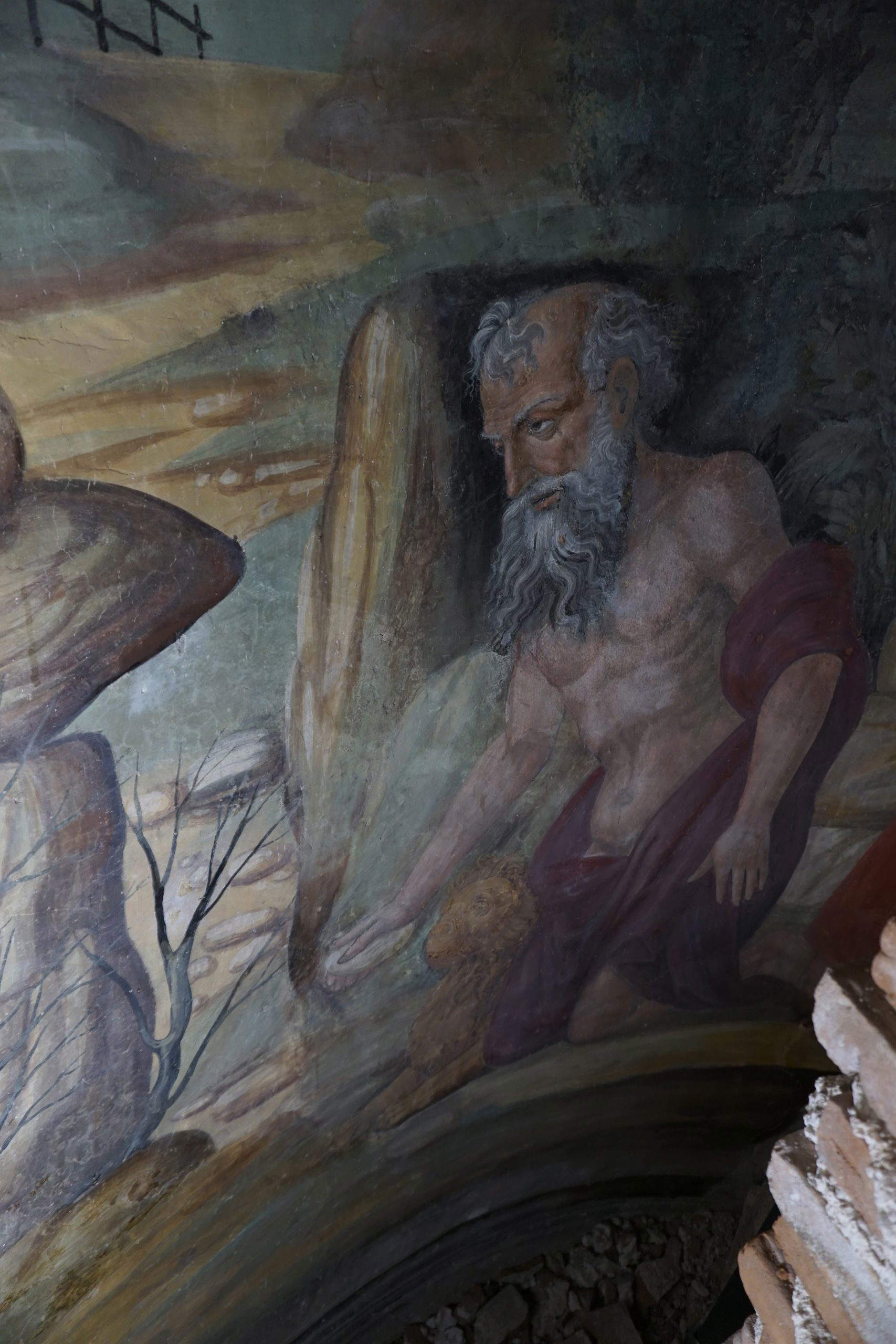
The same artist as the Samaritan woman at the well scene, on the opposite side of the church’s nave, is also responsible for the fresco depicting the penitence of St. Jerome. The scene depicts in a rocky landscape, the saint, depicted as per tradition in the robes of a hermit while beating his chest with a stone, is on his knees and facing a crucifix fixed on the barren ground; at his feet can be seen the robes and hat of a cardinal, a symbol of the renegation of earthly honors. Above the protagonist is a wide landscape, in which, in addition to the scene of the lion (from which the saint pulls a thorn from his paw and which from that moment on becomes his inseparable companion), we see a number of small scenes whose meaning, according to scholars who have had the opportunity to observe the work, is not particularly clear. On the left, some sailors disembark from boats to light a fire on a deserted beach, while on the right, above a relief, a gallows can be distinguished from which hang two unfortunates, at the feet of whom figures on horseback seem to be conversing with a pilgrim.
In contrast, the fresco in the niche of the second 16th-century altar to the right of the nave depicts the Lamentation over the Dead Christ. The body of Jesus, deposed from the cross, lies on a rock supported by St. John, with the figures of the Virgin Mary, Magdalene, and two other women around it, and inside the tomb can be seen Joseph of Arimathea and Nicodemus. The scene again takes place against the backdrop of a wide landscape among the mountains, dominated by a large walled city. Thanks to the notarial deed drawn up by the notary Grascia of L’Aquila on March 14, 1536, we know that the fresco was commissioned by a certain Giovan Battista di Cristoforo from the painter Marin Pietro di Giovanni Marino Ciccarone, an artist most likely trained in the workshop of Francesco da Montereale.
The scene of the Mystical Wedding of St. Catherine sees the three protagonists of the iconographic theme (the Virgin Mary, the Child Jesus and St. Catherine: according to a medieval text, Catherine, after being baptized, had a vision of the Virgin Mary with the child Jesus on her lap, who slipped a ring on her finger, making her his bride) flanked by other saints, in this case St. James the Elder with a broadsword, a pilgrim’s hat and an open book. Behind the main scene heavy drapery occupies the right side, while to the left is a lush landscape overlooked by a walled city and fortress with towers, in which the scene of Christ’s baptism takes place. Particularly well preserved, the fresco is characterized by the vividness of the colors but above all by the very refined technique in the rendering of the figures, attributable to the painting skills of Francesco da Montereale, who was active on this site in 1538. Also interesting and almost intact are the grotesque decorations that frame the niche. A particular type of pictorial wall decoration, which has its roots in Roman painting of the Augustan period and was rediscovered and popularized beginning in the late 15th century. Grotesque decoration is characterized by the depiction of hybrid and monstrous beings, chimeras, often portrayed as slender and whimsical figurines, which blend into geometric and naturalistic decorations, structured symmetrically, against a usually white or otherwise monochrome background.
The excellent state of preservation of the works, the date of almost 500 years ago in the fresco of St. Anthony, the refinement of some of the faces, the fullness of the colors and the richness of the details (found in the backgrounds as well as in the groups in the foreground) make this find, according to the Regional Secretariat, “certainly one of the most fascinating, among the many that the city has seen in these long years of post-earthquake recomposition.” Moreover, it is to date the most complete and complex evidence of L’Aquila’s 16th century located in the city’s historic center, along with the cycle of frescoes in the Monastery of the Blessed Antonia.
Until 2009, only the frescoes decorating the spandrels of the choir vault and those of the two polygonal chapels at the end of the nave remained visible in the Misericordia church. Eighteenth-century renovations, dating to after the 1703 earthquake, had plugged the communication of these chapels with the central hall in order to make way for the third pair of altars, placed symmetrically near the chancel, which completed the sequence of those in the nave. The operations had led to the covering of the 16th-century frescoes. However, the 2009 earthquake had caused major damage that affected the structure, which was already degraded at the time. The greatest damage was suffered by the bell tower and belfry, but the interior of the church also suffered significant consequences after the earthquake.
The design choice, after the discovery, was to integrate the found works into the late Baroque context of the church, maintaining its balance and opening windows to the past where possible. This is why it was deemed appropriate to show these unique works precisely on the days dedicated to Heritage, its protection and enhancement, to give a concrete meaning to the theme of this edition: the “Heritage inLife,” that of the trades and knowledge that are handed down and shared to maintain and transmit to future generations the artistic and cultural wealth that is summa of our identity.
The restoration of the Misericordia will then be completed with the work (currently being planned) on the side chapels to the apse, which will not be visible during the special opening for GEP and which depict God the Father with the Evangelists and Saints and The Coronation of the Virgin and scenes from her life. This long and articulated journey has made the Misericordia (owned by the Azienda di Servizi alla Persona ASP No. 1 of the Province of L’Aquila) one of the main artistic assets of the area. The small church, which since the late 16th century has been part of the Misericordia Conservatory complex and in recent times (that is, until the 1990s) hosted classical music concerts, while before 2009 it was used to celebrate masses in Latin, has now regained its former preciousness.
“Certainly the discovery,” wrote scholar Rossana Torlontano, “will be the subject of more careful reflection in the future, also in relation to how much this date will weigh on the overall judgment of all the frescoes and the research of the different hands of the masters involved.” At the moment it is believed that the date of 1538 "can be interpreted as the terminus post quem after which Francesco da Montereale had departed from the church, leaving to his collaborators the task of concluding the realization of the pictorial program he had undertaken. The work may have had to experience a slowdown, if not a real setback, since we find mentioned the name of Pierfrancesco da Montereale, Francesco’s son, who was involved on November 26, 1551, in a convention that had been stipulated to paint a chapel in our church on behalf of the noblewoman Giulia Franchi 17, a member of the noble family of Aquila for whom his father Francesco had already worked in 1510, on the occasion of the wedding of Count Giovan Francesco Franchi."
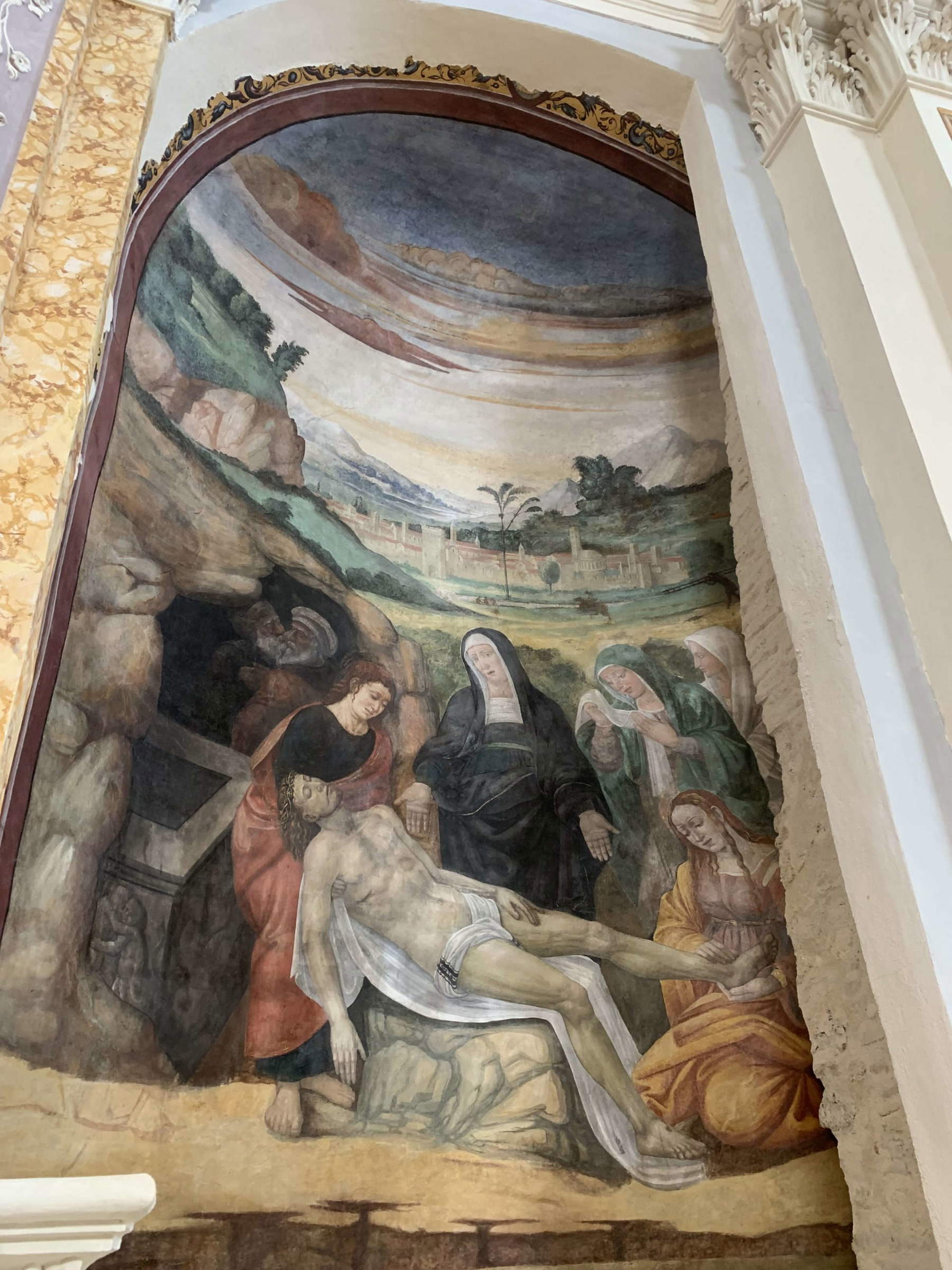

 Mystical Marriage of St. Catherine
Mystical Marriage of St. Catherine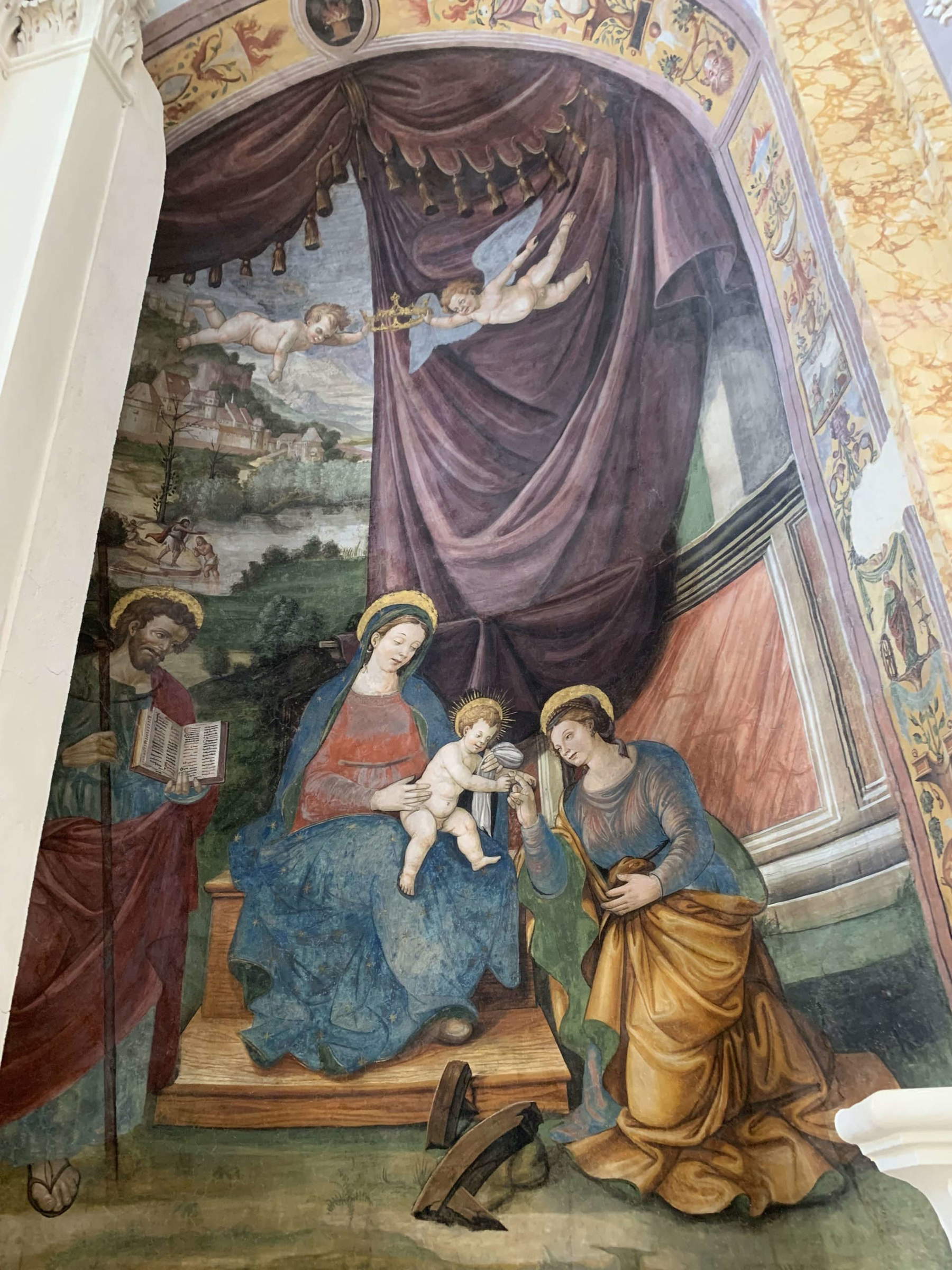 Mystical Marriage of St. Catherine
Mystical Marriage of St. Catherine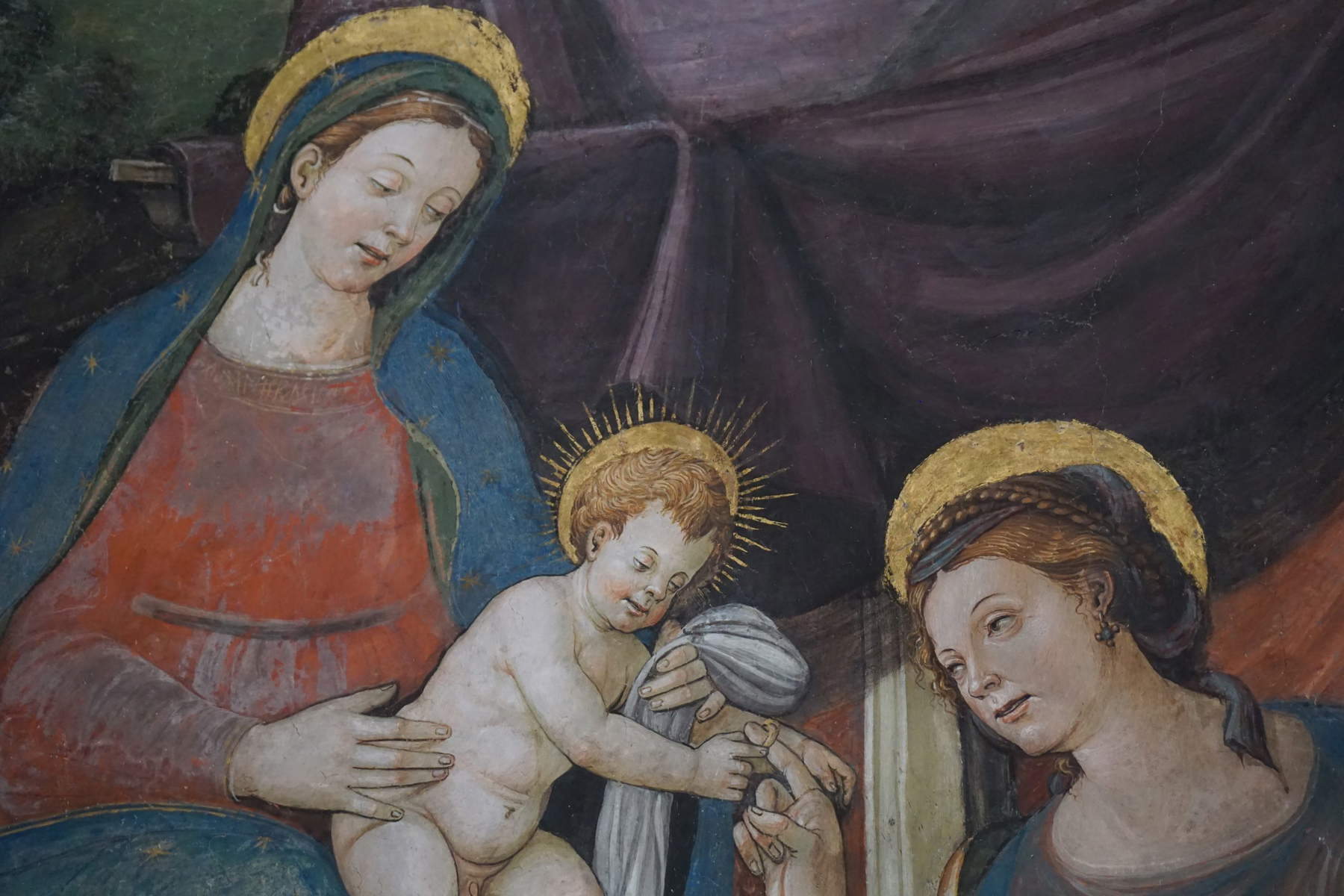 Mystic Marriage of St. Catherine
Mystic Marriage of St. Catherine
 |
| L'Aquila, important cycle of 16th century frescoes discovered during a restoration |
Warning: the translation into English of the original Italian article was created using automatic tools. We undertake to review all articles, but we do not guarantee the total absence of inaccuracies in the translation due to the program. You can find the original by clicking on the ITA button. If you find any mistake,please contact us.






